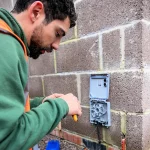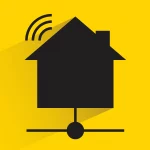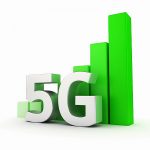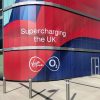Vodafone Claims Faster Rollout of 5G Standalone to Boost UK by £7.4bn

Mobile operator Vodafone is continuing to try and drum up support for their proposed merger with Three UK, which today sees them publishing new research that claims “expediting” the rollout of Standalone 5G (mobile broadband) could contribute an additional £7.4bn to the UK economy by 2030 compared to a slower deployment.
Most existing 5G networks in the UK are Non-Standalone (NSA) based, which in simple terms means they partly rely on older 4G infrastructure. By comparison, Standalone (SA) reflects a pure end-to-end 5G network that can also deliver improvements such as ultra-low latency times (fast), better upload speeds, network slicing capabilities, better support for Internet of Things (IoT) devices, increased reliability and security.
This year Vodafone became one of the first UK operators to launch a 5G SA network with their new “5G Ultra” package for consumers (here), although its coverage was initially limited to parts of London, Manchester, Glasgow and Cardiff, with more cities to follow.
Advertisement
The latest research suggests that spreading 5G SA nationwide, via an expedited rollout, could have big economic benefits for the UK. But take all this hyperbole with a pinch of salt because gauging the economic benefits of faster mobile broadband, as well as other improvements like lower latency, is notoriously difficult. Part of the problem here is that good 4G networks can often already do a lot of what 5G is hyped up to deliver.
Example Benefits of Rapid 5GSA Rollout (Nationwide)
• If 5GSA infrastructure is rolled out rapidly nationwide, the UK stands to gain £7.4 billion in economic benefit by 2030.
• 5G-enabled remote patient care could save the NHS up to £1 billion per year, equivalent to 15,400 full time nursing posts, while councils could reduce spending on social care by up to 5%.
• Meanwhile, the use of 5G-enabled technology across the rail network could save passengers 25 million hours in travel time over the next five years, worth £325 million to the UK economy.
• 5G-powered smart city lights could reduce energy usage, save money and reduce emissions: councils could save £700 million over the next 5 years, while emissions could be reduced by one million tonnes of CO2 – equivalent to replacing 250,000 petrol or diesel cars with electric.
Previous research by Vodafone UK has similarly claimed that if rural communities had the same 5G coverage as urban areas, 838,000 more people would have some access to 5G, where none currently exists. The report then goes on to argue that these applications and benefits “will not materialise without a more consolidated mobile market” (we can already see where this is going).
Vodafone, as part of their proposed mega-merger with Three UK, has pledged to reach more than 99% of the UK population with their 5G SA network by 2034 and push fixed wireless access (mobile home broadband) to 82% of households by 2030, amongst other things.
Suffice to say that this report forms part of the operator’s ongoing push to drum up more support for the merger – they even got the UK’s Digital Infrastructure Minister to play ball. The proposed deal has recently faced some criticism over fears of job losses, price rises, security risks and the potential for negative impacts on competition.
Advertisement
Ahmed Essam, CEO of Vodafone UK, said:
“Speed matters when it comes to the availability of the most technologically advanced digital networks. Digital technology has the potential to transform the way we live, work and access vital public services. The faster we can make these opportunities available to customers, the greater the overall impact to the UK.
We’ve already begun, but the proposed combination with Three UK will mean we have the scale to accelerate investment to bring benefits to businesses and consumers sooner rather than later. We have committed to £11bn of investment to deliver Standalone 5G across the UK.”
Sir John Whittingdale, Minister for Data and Digital Infrastructure, said:
“In our increasingly connected digital world, access to high-speed, reliable connectivity has become an essential part of everyday life. This research shows exactly why we’ve made rolling out high-speed connectivity a top priority – bringing lightning-fast internet to every corner of the UK will help transform our communities by injecting more than £7bn into our tech-driven economy by the end of the decade”.
At the end of the day, deploying 5G SA more widely and at a faster pace should deliver various big improvements, which is something to be both welcomed and encouraged. But we’d caution against accepting the inflated optimism of these reports as an accurate reflection of future reality, since in our experience the real-world outcomes are often a lot more modest and much harder to quantify.
In particular, when talking about stretching such coverage out into rural areas, we must also consider that the benefits of 5G SA become much more restrained by the sparse environment and the need for lower frequency mobile spectrum (i.e. the signal travels further, but can’t push as much data around due to limitations of the available frequency spectrum).
We fully expect future 6G hype will, once again, try to sell society on its ability to deliver almost everything except the second coming of Christ, although operators might save that one for 7G. But you get the idea. Pinch of salt.
Mark is a professional technology writer, IT consultant and computer engineer from Dorset (England), he also founded ISPreview in 1999 and enjoys analysing the latest telecoms and broadband developments. Find me on X (Twitter), Mastodon, Facebook, BlueSky, Threads.net and Linkedin.
« London Business ISP Vorboss Does 10Gbps for £150 a Month UPDATE






















































My cynicism meter almost exploded reading this article,
They could open it up for existing customers if they wanted to expedite the rollout.
“ 5G-powered smart city lights could reduce energy usage, save money and reduce emissions: councils could save £700 million over the next 5 years, while emissions could be reduced by one million tonnes of CO2 – equivalent to replacing 250,000 petrol or diesel cars with electric.”
We no it won’t. Because most metropolitan areas as well as areas served by PFI contracts already have connected street lights delivering these benefits. And this is delivered via LPWAN technologies operating very effectively in the unlicensed spectrum.
Not only is the opportunity not there for 5g, why on earth would you want to deploy expensive 5g technology inside street lighting nodes when they have already been deployed and proven at scale using LPWAN.
Where has 5g been deployed at scale in street lights anywhere?
As for the rest of it, we don’t need 5g stand alone everywhere. There is no economic or commercial case for deploying it at scale.
The one place which did so and did it before anywhere else in the world, South Korea, are now saying that effectively it was a waste of time and resources, as benefits and use cases over 4g have failed to materialise.
Nearly everything can be delivered today via exiting 4g and 5g at the macro level, together with of course the most successful wireless technology in history, Wi-Fi, which almost devices spend most of their time connected to.
What we need is better and more ubiqtous macro level cellular deployment, particularly in rural areas, and better Wi-Fi networks in population centres and venues utilising OpenRoaming, with the MNOs embracing Wi-Fi offload.
This whole model of the MNOs paying vast sums to the government for spectrum who in turn push the latest licensed technology as some sort of economic catalyst is getting tiring.
it’s the “private 5G network” concept that I don’t understand.
WiFi access points are cheap enough and have no direct ongoing cost (support contracts or Meraki-style cloud services are optional). WiFi is built into every mobile device as standard.
Private 5G is a lot more complex, involves a series of middlemen who will charge per device per month, and of course cellular enabled laptops/tablets cost significantly more as well.
It just doesn’t make sense, especially for devices that will never leave your site, such as factory equipment
Oh don’t get me started on that, my local council changed all my streetlights with 5G enabled ones last year that have the added benefit of scaling the brightness depending on some sort of variables.
These are constantly ran at max brightness and it completely ignores the mesh network we’ve had since 2015.
I’m getting about 500 mbs down and 40 to 50 up on a 5g b/b package with 3, at the moment it’s costing at least 1/2 the price of a fttp package with the same speeds. All in all a bargain.
and if the rest of the people in your street took it up, the FTTP would look a lot more attractive. That’s the bit people forget when they say 5G is the “fibre killer”
“5G-powered smart city lights” . Why though? how does adding radio technology make it use less power. What’s wrong with the photoelectric diode turn on when it’s dark approach? Seems like they’re trying to shoehorn the technology into things by inventing problems we don’t have.
What potential economic benefits could the UK experience with the nationwide rollout of 5G Standalone (5G SA), and what challenges might arise in assessing these benefits, especially given the capabilities of existing 4G networks?
Visit us telkom university
So the £4.7b is magically going to appear..maybe from the cost cuts, job losses, savings made there and price increases will give them £4.7b